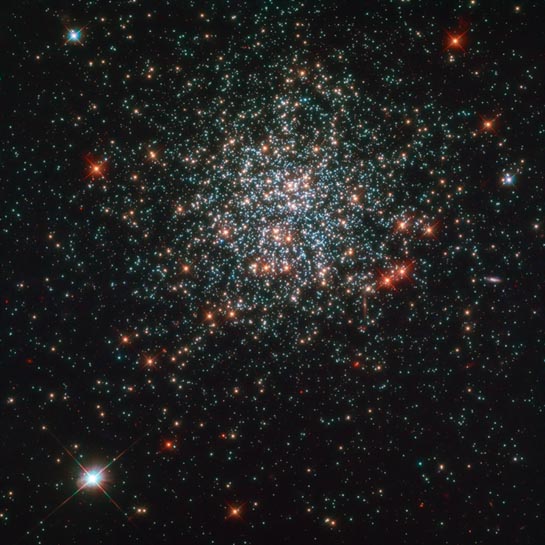
Star Cluster
RA 6h 4m 39.02s Dec -75° 26' 0.45"
Mensa
160,000 light-years
11.3
3.3 arcmin
2.57 x 2.67 arcminutes
North is 152.0° right of vertical
ESA/Hubble & NASA, L. Girardi
July 27, 2020
ABOUT
THIS IMAGE:
Looking its best ever is the star cluster NGC 2203, here imaged by the NASA/ESA Hubble Space Telescope. Aside from its dazzling good looks, this cluster of stars contains lots of astronomical treats that have helped astronomers puzzle together the lifetimes of stars.
A main sequence star, like our Sun, is the term applied to a star during the longest period of its life, when it burns fuel steadily. Our Sun's fuel will run out in approximately 6 billion years, and it will then move on to the next stage of its life when it will turn into a red giant. Astronomers studying NGC 2203, which contains stars that are roughly twice as massive as our Sun, found that their rotation might be a factor as to why some of the stars stay longer than usual in this main-sequence phase of their life.
It
was discovered on January 23, 1836 by the English astronomer John Herschel
. This is the best resolution obtained of the star cluster to date.